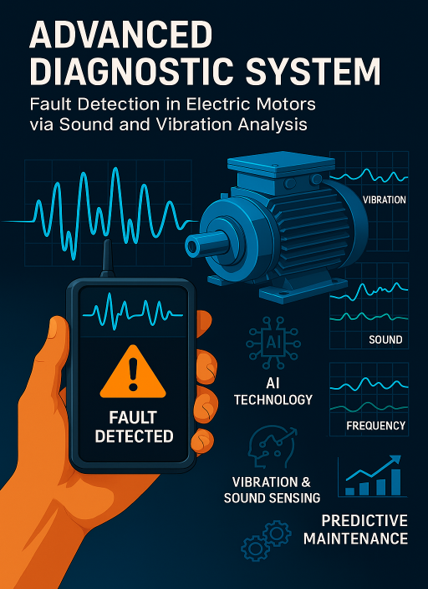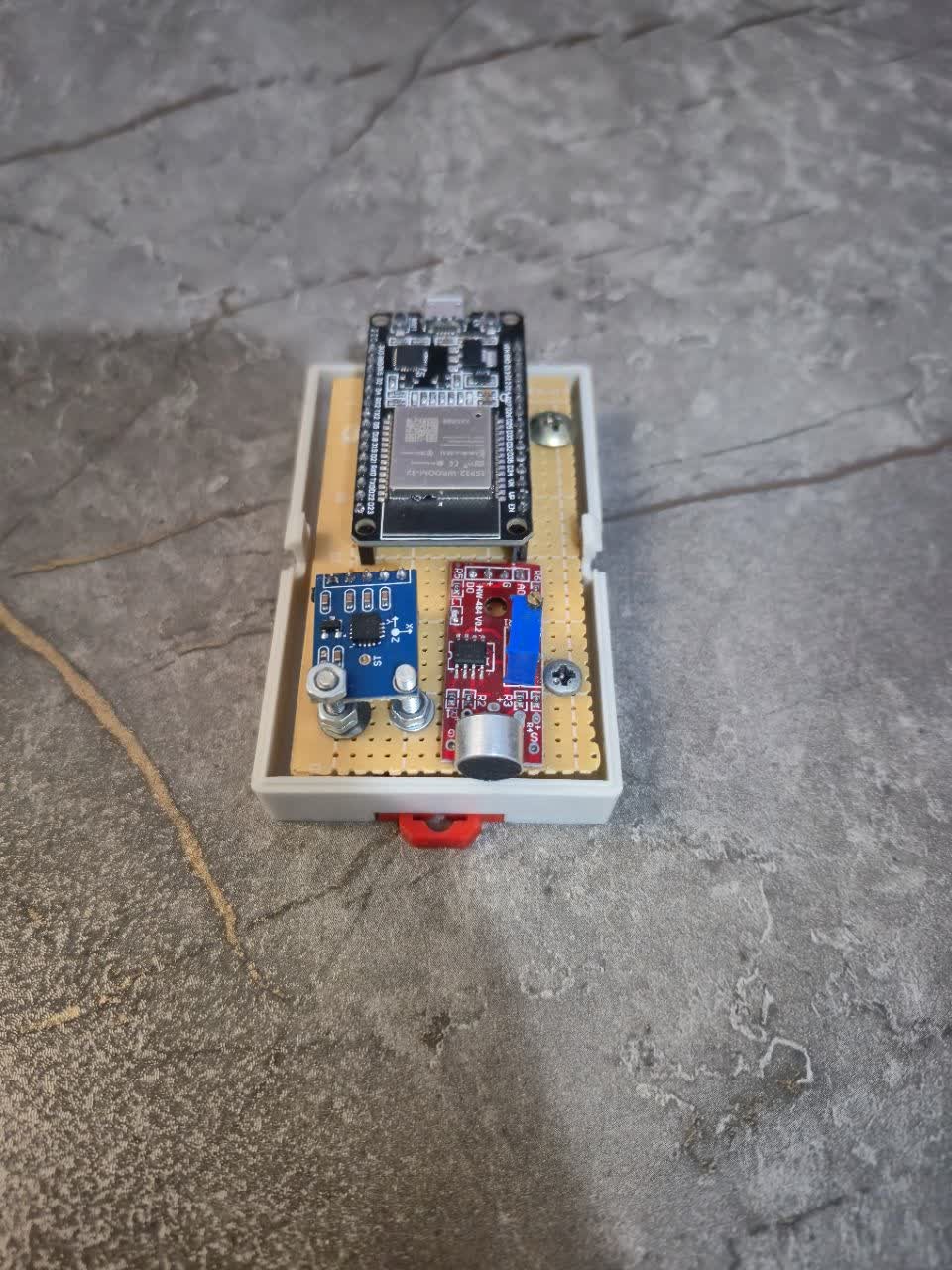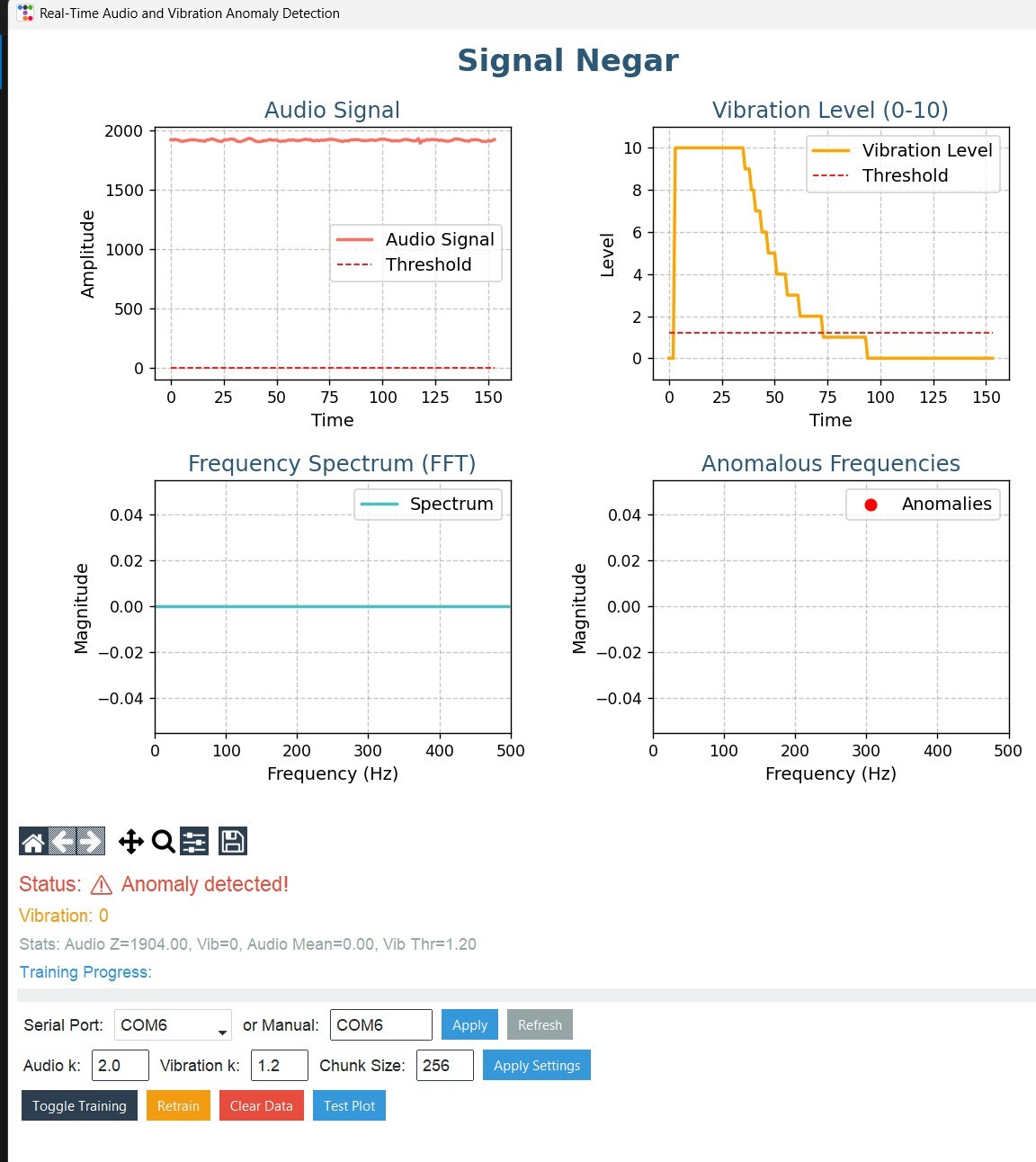Continuous monitoring of industrial equipment is one of the key needs of modern industries, as it helps detect early deviations and prevent costly breakdowns. Sound and vibration anomalies often appear as the first warning signs of mechanical or operational failures. However, many conventional monitoring systems are limited by low sampling rates, lack of real-time analysis, or the absence of remote monitoring, making them less effective in demanding industrial environments. Previous studies have explored different methods for anomaly detection. Some focused on sound signal analysis using statistical methods, while others employed vibration sensors to detect abnormal patterns. Although these approaches provided valuable insights, most relied on offline processing or low-power hardware with limited frequency analysis capabilities. In addition, the lack of integrated network connectivity often prevented real-time remote supervision, which is increasingly critical in today’s connected industries.
Our research addresses these challenges by introducing an integrated system that combines the ESP32 microcontroller, FFT-based frequency analysis, and TCP/IP network communication. The innovation lies in merging high sampling rates, real-time signal processing, and a dynamic remote monitoring interface. This design not only increases detection accuracy but also allows flexible integration with various industrial devices, ensuring broader applicability across different sectors.
Initial experiments show that the proposed system can detect anomalies quickly and with high accuracy under diverse operating conditions. These results highlight the potential of our solution to enhance equipment performance, reduce maintenance costs, and prevent unexpected production stops. By bridging the gap between traditional monitoring methods and modern industrial needs, this system provides a practical, cost-effective, and scalable tool for ensuring reliability and safety in industrial operations.

The proposed system is built around three main components: hardware, software, and network connectivity. On the hardware side, sound and vibration data are collected by sensors and processed in real time using the ESP32 microcontroller. Frequency analysis is performed directly on the device through the Fast Fourier Transform (FFT) algorithm, ensuring that anomalies can be detected quickly and efficiently without the need for heavy external hardware.
The processed results are then sent to a Python-based software interface, where the data is displayed and statistically analyzed to identify abnormal patterns. Finally, through the TCP/IP protocol, this information is transmitted to a web-based monitoring service, enabling remote supervision anytime and anywhere. By combining data acquisition, real-time processing, and online accessibility, the system provides a robust and scalable solution for modern industrial environments.
Hardware
The system uses an ESP32 microcontroller with sound and vibration sensors to capture data at high sampling rates. The KS-07S microphone records audio signals, while the ADXL335 accelerometer tracks vibrations, with interface circuits filtering out noise for clean analysis.Lightweight software on the ESP32 processes the signals using FFT and vibration intensity calculations, then sends the results to a Python-based interface. This setup makes it possible to detect and display sound and vibration anomalies in real time, with the added benefit of remote monitoring via network connection.

User Interface Software
The user interface was developed in Python using libraries such as ttkbootstrap, matplotlib, and numpy. It provides real-time charts for sound and vibration signals, threshold controls, and zoom features, while anomalies are detected using a z-score method for audio and a fixed threshold for vibration. For remote monitoring, data is transmitted via TCP/IP using the ESP32 with an ENC28J60 network module, and received in JSON format by a web service that displays live dashboards and anomaly reports. Network latency was measured at less than 100 ms, ensuring real-time performance. System evaluation in both real and simulated conditions confirmed its accuracy in detecting anomalies, fast response times, and stable operation even under noisy environments.

This study successfully developed an integrated system for real-time detection of sound and vibration anomalies in industrial equipment. The approach overcame common limitations of earlier solutions, such as offline processing, low sampling accuracy, and the lack of remote monitoring. Tests confirmed high accuracy in detecting anomalies, fast response times, and stable operation even under challenging and noisy conditions. These results underline the potential of the system to improve safety, reduce maintenance costs, and enhance efficiency in industrial environments.
At the same time, certain challenges remain, such as reduced accuracy in extremely noisy conditions and sensitivity limits for small-scale vibrations. Future research should aim to refine sensor accuracy, improve noise handling, and expand adaptability for diverse industrial applications. With these enhancements, the system can evolve into a reliable and scalable tool for smart factories, supporting safer, more efficient, and sustainable industrial operations.
Developed and researched by Alireza Maghsoudi – Aicer Lab